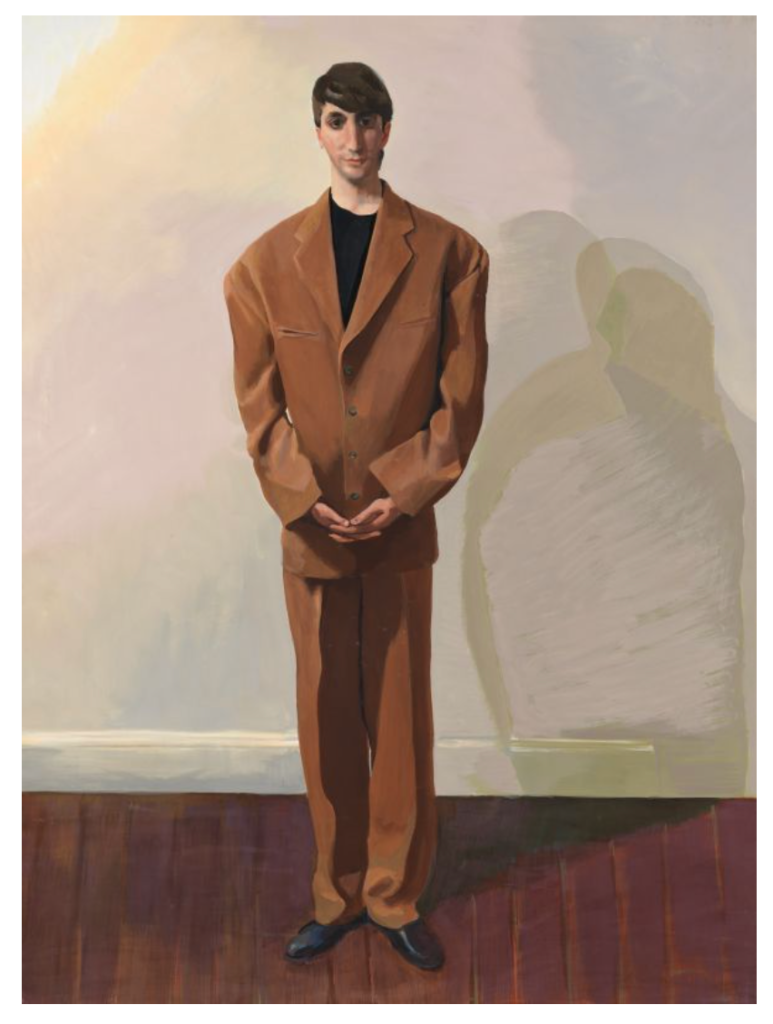Through September 5th, the Pennsylvania Academy of the Fine Arts is celebrating the work of local painter, art therapist, and former fixture at Blick’s Art Supply, Gilbert Lewis. The method by which they are grouping his work, the cohesive lens if you will, is through showcasing some 25 paintings depicting Anthony Rullo, who served as one of Lewis’ models for a decade.
“This show is about the relationship between gay older artist and gay younger model, during a ten year period in the early days of the AIDS epidemic,” said Rullo, who is the model, the Tony, in “Only Tony.”

Rullo’s boyfriend passed away from AIDS in 1990, yet that week he still went to sit for Lewis. Perhaps because Lewis was an art therapist (although he painted models whenever he had the opportunity) heading into his session was as therapeutic as it was artistic.
Initially, he posed for Lewis wearing high-end fashions, as he was reluctant to pose nude. Many models explain that posing nude can be empowering. Shedding clothing means shedding inhibitions. But Rullo disagreed with that assumption when asked about his first nude, in which he is captured in tears, after sharing the loss of his boyfriend.
“Posing nude had more to do with my growth or maturity, trust, my mortality. I was just ‘widowed,’ HIV+, afraid I would die,” he explained. “I was homeless and broke when I decided to pose nude. I wouldn’t say empowering.”
Rullo now makes his home in Miami. He spoke with PGN, and other local outlets, sharing his relationship with the painter as muse. In an interview with Pennsylvania Academy of the Fine Arts, he explained that, like many gay men did in the 1980s and still do today, he came to “the big city” to reinvent himself. Part of that personal rebirth of himself as an out gay man came when he met Lewis, who said of Rullo that he looked as if he had stepped out of an Italian Renaissance painting.
The body of Lewis’ work, through Rullo, is enlightening for viewers. The portraits capture the fragility of youth, in a manner befitting a realist who studied the Italian masters. Rullo cautions viewers that while this particular show features his likeness, it’s really about Lewis as a painter.
The two men drifted apart, with Rullo settling into a more domestic and professional life and buying a home in Philadelphia. However, 35 years later he learned that Lewis was suffering from dementia. He stopped posing in the mid 1990s, feeling he was too mature for the work. But, perhaps he also wanted to let some other young models take his place.
Lewis is now suffering from Alzheimers and living in a nursing home. Rullo’s recent trip to visit the artist proved bittersweet. While Lewis had images of Rullo hanging nearby, he did not recall having met Rullo before.
However, when Rullo initially learned Lewis was diagnosed with dementia, muse was able to reconnect with artist. The product is a striking portrait, “Untitled [Wooden table, wearing a watch, wine glass].”
“That painting was my reunion with Gilbert,” Rullo explained. “When I found out he had dementia.”
While much of Lewis’ work recalls the tradition of great Italian painters, this later image seems almost Flemish in its conception. Perhaps with a touch of American painter Grant Wood, famous for “American Gothic,” who is believed to have been gay, and who was greatly influenced by the Northern Renaissance.
The work of Lewis has caught the eye of many local collectors. His work is especially prized by gay collectors who can read, or see, the “gay gaze” in his work. This sensitivity to the plights of queer life — and related issues such as the early AIDS epidemic — is caught by his brush in the visual interpretation of his models.
If summer plans make a trip to the exhibit impossible this season, the work of Gilbert Lewis is featured in several prestigious collections. You can find his work locally at the Philadelphia Museum of Art, PAFA, which is holding the current exhibit, the Montclair Art Museum, and the Woodmere Museum in Germantown. He is also featured in the Leslie-Lohman Museum in Manhattan, which specializes in LGBTQ+ art and artists.
To learn more and to purchase tickets, visit pafa.org/.

